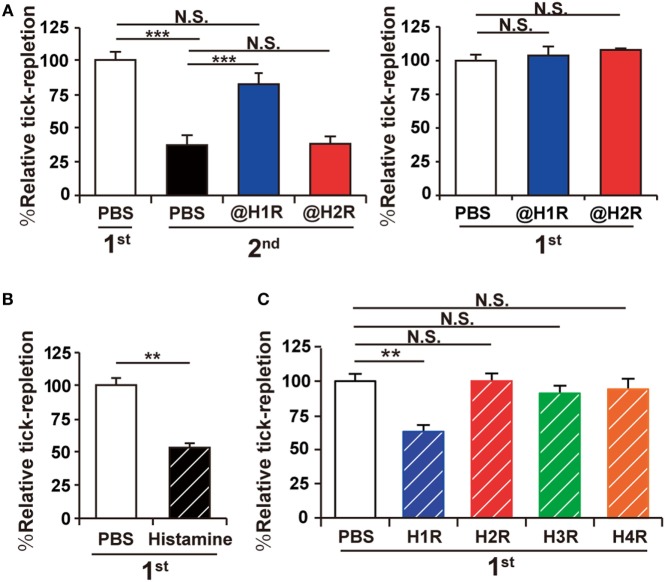Figure 1.
Acquired tick resistance is abrogated by a histamine H1 receptor antagonist. (A) Mice were infested with tick larvae once (right panel) or twice (left panel). They were treated with intravenous administration of histamine H1 or H2 receptor antagonist (@H1R or @H2R) or control PBS once a day for 7 days, starting 1 day before the first infestation (left panel) or the second infestation (right panel). The relative tick repletion in each experimental group is shown (mean ± SEM, n = 3 each), in that the value in the first infestation of mice treated with control PBS was defined as 100%. (B,C) Mice were infested once with tick larvae. Histamine (B), histamine receptor (H1R, H2R, H3R or H4R) agonists (C), or control PBS was injected intradermally beneath the tick-infested site once a day for 7 days, starting 1 day before the infestation. The relative tick repletion was calculated and shown as in (A) (mean ± SEM, n = 3–4). All the data shown are representative of three independent experiments. Statistics: t-test in (B) and one-way ANOVA in (A) and (C) N.S., not significant; **p < 0.01; ***p < 0.001.

